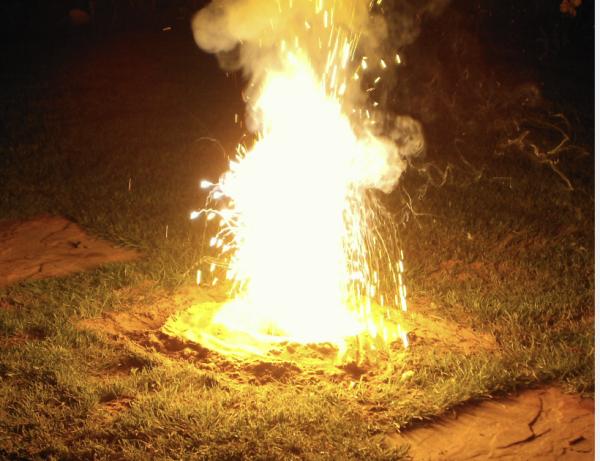Another critical number is 2800oF – the melting point of iron. In the chemistry section below, I will explain why this matters.
A Brief History of Thermite
Thermite, a mixture of aluminum powder and iron oxide, was first developed in 1893 by German chemist Hans Goldschmidt. He aimed to create a method for producing pure metals from their oxides—a process that required extreme heat. This method, which is called the Goldschmidt or aluminothermic reaction, generates intense heat upon ignition, making thermite especially useful for welding, for example, in railway track repairs.
Unsurprisingly, it also became useful for military purposes, thanks to its ability to cut through metal and armor. Today, it remains useful in metal cutting, and even pyrotechnics, as well as metalworking and emergency welding repairs. And military uses.
The Chemistry of Thermite
Many powdered metals, e.g., magnesium, copper, iron, zinc, and aluminum (1) will burn because of the increased surface area caused by the grinding process. Magnesium and aluminum powders burn the hottest.
Here are the reactions:
2Mg + O2 ---> 2MgO
4Al + 3O2 ---> 2Al2O3
Powdered magnesium and aluminum react violently with oxygen. These are some of the most exothermic reactions known.
Aluminum powder itself burns in the air at about 4,500oF, so it is not immediately obvious why iron oxide is added. However, its addition contributes to the fiendishness of thermite in two ways.
First, it acts as a built-in oxygen source. Iron oxide transfers its oxygen to aluminum in what is called a redox (reduction-oxidation) reaction
Fe2O3 + 2Al ---> 2Fe + Al2O3
Ferric (iron III) oxide reacts with aluminum to form elemental iron and aluminum oxide, generating enormous heat in the process.
Second, and far worse, this temperature far exceeds the melting point of iron (2,800oF), so it is molten, not solid, iron that is falling from the sky. How does one protect oneself from 5,000oF "metallic rain" that falls in superheated droplets? Not easily. There is little that can be done to stop it.
I asked ChatGPT how troops can protect themselves from an aerial thermite attack. Some of its suggestions were:
- Seek Immediate Shelter behind thick-walled brick or concrete
- Use underground bunkers when available
- Avoid vehicles such as tanks or trucks
- Evacuate metal structures (thermite will burn through them)
- Keep burn treatment supplies on hand
Bottom line
Hans Goldschmidt probably had no idea of his invention's destructive power (thermite wasn't used in warfare until two decades later, in World War I). But more than a century later, its massive power is being unleashed in an already bloody war—and it's all because of one simple redox reaction.
NOTE:
(1) Although magnesium, copper, iron, zinc, and aluminum will burn when in powdered form, only magnesium – the most reactive of this group of metals – can be easily set on fire unpowdered. But you can't ignite a solid piece of magnesium with a match or lighter. Instead, magnesium usually comes in turnings (thin strips or shavings that are highly reactive and flammable due to their increased surface area).
This piece does not express my opinion of the war or its outcome.




